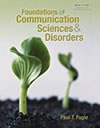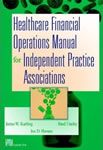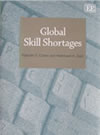All Articles
Alternative Dispute Resolution (ADR)
Insurance
Animals
International Trade
Appraisal & Valuation
Jails - Prisons - Correctional Facilities
Attorney Fees
Land Mapping - Surveying - Zoning
Audio Forensics
Laws & Procedures
Blockchain Information
Legal Issues
Business Consulting
Marine - Maritime
Child Witch Phenomenon
Market Research
Computers
Marketing
Cosmetology: Hair / Makeup
Medical - Medicine
Dental - Dentistry
Medical Malpractice
Discovery & Electronic Discovery
Mining
Documentation Examination & Analysis
Nursing
Education & Schools
Obstetrics - Gynecology (OBGYN)
Elder Abuse
Pharmacy & Pharmacology
Elevators - Escalator - Automatic Doors
Plants & Trees
Energy - Utilities
Politics
Ethics / Ethical Duties
Psychology
Exercise & Fitness
Radiology
Failure Analysis
Securities
Family Issues
Speech-Language Pathology
Food & Beverage
Spirituality
Healthcare Facilities - Hospitals
Telecommunication
Industrial Hygiene and Safety
Transportation
Injury
Warnings & Labels
More...

STATISTICAL-ANALYSIS-PAGE ARTICLES MAIN PAGE
. Contact Us if you are interested in having your work published on our website and linked to your Profile(s).
All Articles
Accident Prevention & Safety
Human Resources
Addiction Issues & Substance Abuse
HVAC - Heating, Ventilation, Air Conditioning
Appraisal & Valuation
Industrial Hygiene and Safety
Architecture
Insurance Coverage Analysis
Bacteria - Fungus - Mold Investigation
Investigation & Surveillance
Biokinetics
Law Enforcement
Business Management
Machinery
Chemical Industry
Manufacturing
Child Welfare
Marine - Maritime
Child Witch Phenomenon
Marketing
Computer Forensics
Mediation
Cosmetology: Hair / Makeup
Meditation
Crisis Management
Mining
Digital Forensics
Nonprofit Organizations
Discovery & Electronic Discovery
Obstetrics - Gynecology (OBGYN)
Engineering
OSHA
Enterprise Resource Planning (ERP)
Patents
Ethics / Ethical Duties
Plants & Trees
Expert Witnessing
Psychology
Fires & Explosions
Radiology
Forensic Analysis
Recreation & Sports
Forensics
Sexual Abuse - Molestation - Harassment
Forgery & Fraud
Underwriting
Healthcare Facilities - Hospitals
Workplace Violence
Human Factors
Yoga
More...
Featured Articles
There are no active articles here at this time. Please use the search bar, try another category, or contact us if you would like to contribute an article.
This Article is unavailable. Contact Us
Search articles by title, description, author etc.
Sort Featured Articles
Featured resources
Foundations of Communication Sciences...
by Dr. Paul T. Fogle
Healthcare Financial Operations...
by James W. Karling, Reed Tinsley, CPA, Joe Havens
Global Skill Shortages
by Malcom S. Cohen, PhD
Follow us










